In the heart of Design ni Dukaan’s creative journey lies an audacious endeavor to reimagine traditional workspaces. Like a skilled artisan molding clay into a masterpiece, Design ni Dukaan seeks to harness the intrinsic qualities of materials to craft environments that exude warmth and hospitality, igniting a sense of belonging and purpose among those who inhabit them.
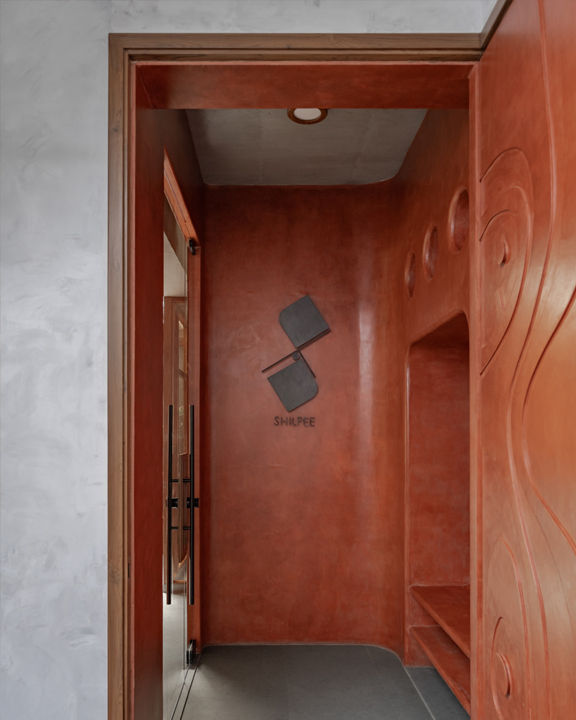
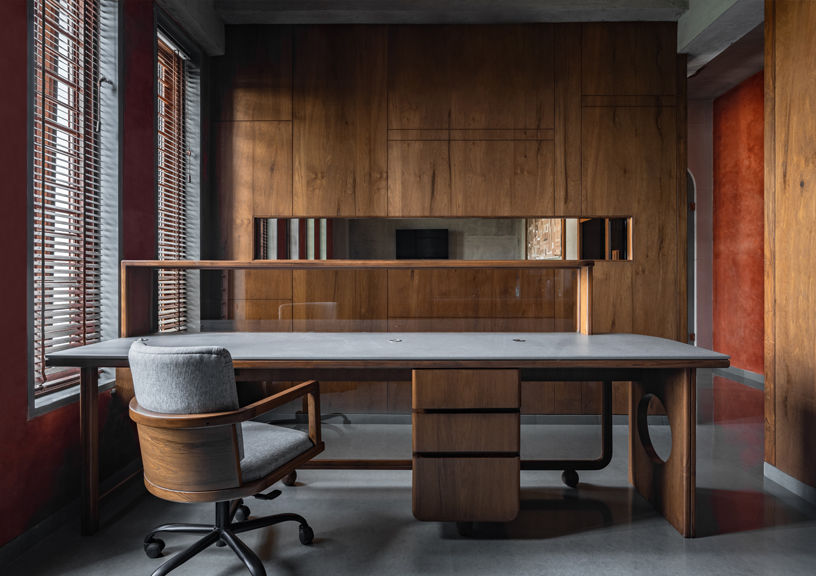
Veeram Shah, the Founder and Creative Director of Design ni Dukaan, aims to make a continuous effort to challenge conventional perceptions surrounding the scope of design. This project is dedicated to pushing boundaries and redefining workspaces. It centers on exploring the sensory aspects of a space. A gradual building of elements, objects and functional sculptures of various scales; parts, eventually coming together to create the “whole”.
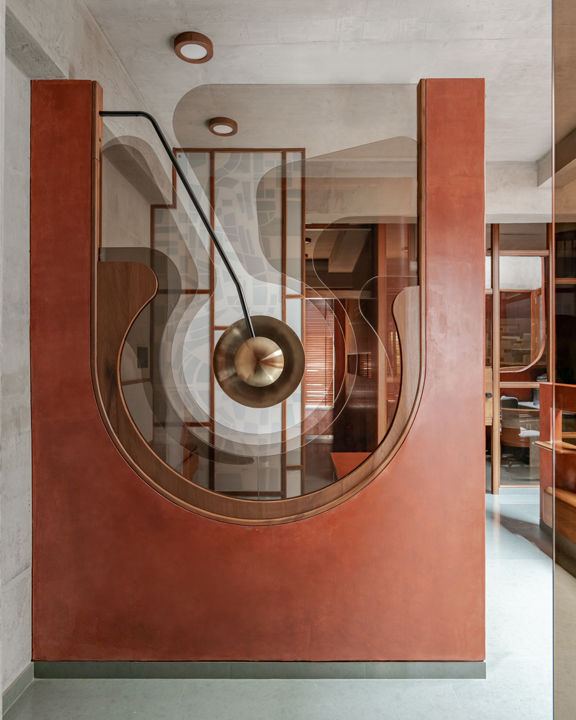
In that particular scenario, the focus extended beyond mere functionality. The client was presented with a brief: “Let us make an attempt to use our knowledge and details to reimagine office spaces. Can we use materiality as a process to find a solution to this project? Can we use this process to create a warm work culture? An atmosphere that induces more productivity? Can art inserts become a seamless part of the volume?”
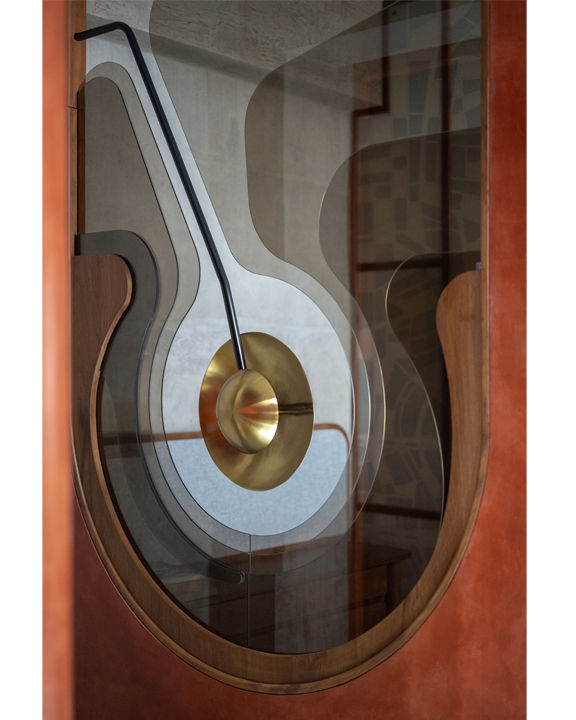
In terms of the functions and flow of spaces, the requirements were a reception, waiting area, two executive cabins, a few meeting desks and some workstations along with a pantry and toilet. It was a conscious choice to embrace the original form of the architectural structure, allowing it to serve as the anchor for the construction. This approach not only conserved resources by bypassing the need for additional finishing and false ceilings but also welcomed imperfections as part of the aesthetic. A warm and minimal material palette using teak, brown glass and a terracotta micro concrete was created that would seep into various parts of the project and hold the volume together.
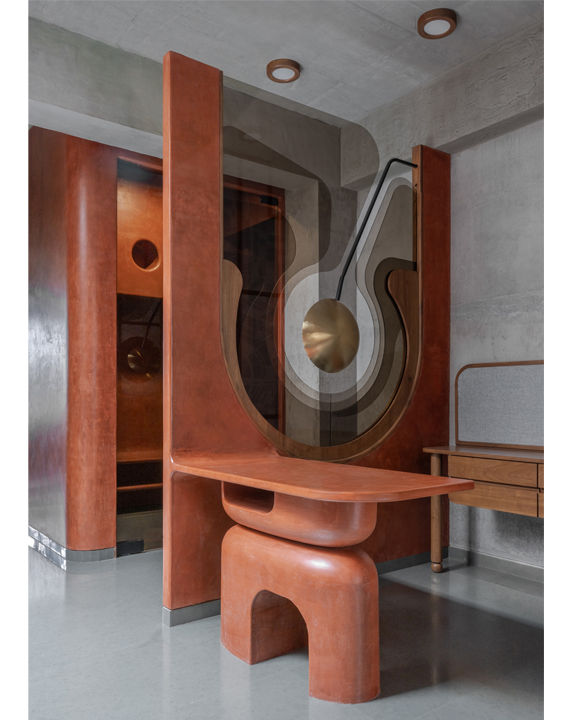
As the design process unfolds, a seamless dance between art and architecture takes center stage. No longer relegated to the periphery, art inserts seamlessly integrate into the tapestry of the space, blurring the lines between functionality and aesthetic expression.
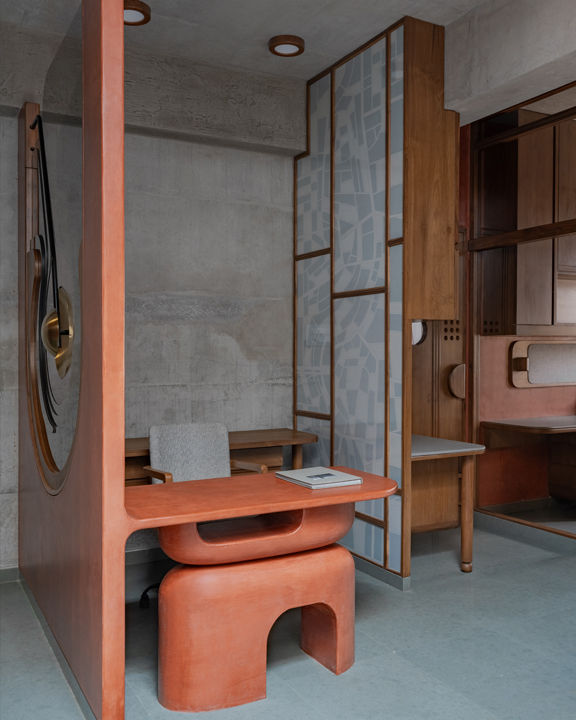
The entrance was marked with a folding door with patterns inspired from various modernists, this intervention was essential to avoid using a commercial sliding shutter. As one enters the office, the second artwork in layers of glass becomes the visual stimuli. This mural was designed in 5 layers of 5mm brown glass. The experiment here was to limit the light passing through thicker sections to create a halo-like effect.
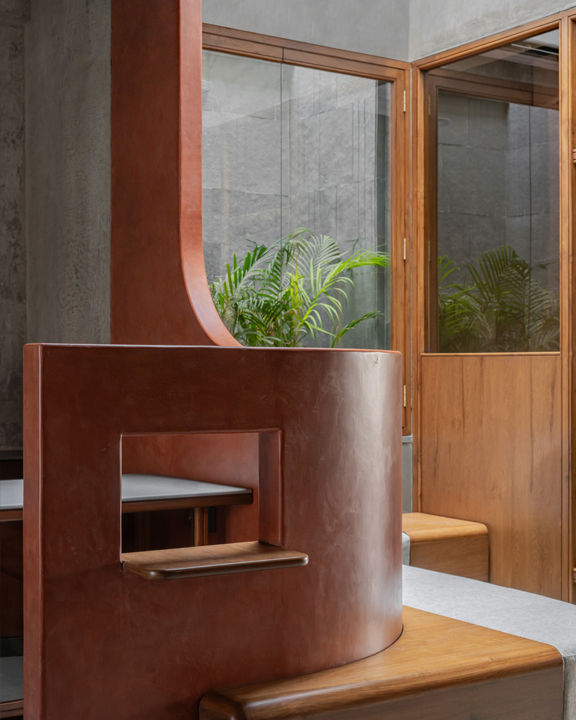
The reception table was envisioned as a sculpture that becomes the focus as one looks at it from the waiting area. The waiting area follows a sinuous curve wrapping around the first discussion area and also embracing the curved seating. As the core and a space that would be away from the two openings, we decided to give it a skylight. Ample lights flow into this space through the cutout in the slab. In the process of designing the project, this was always envisioned as the central soul through which light and life would permeate other parts of the office.
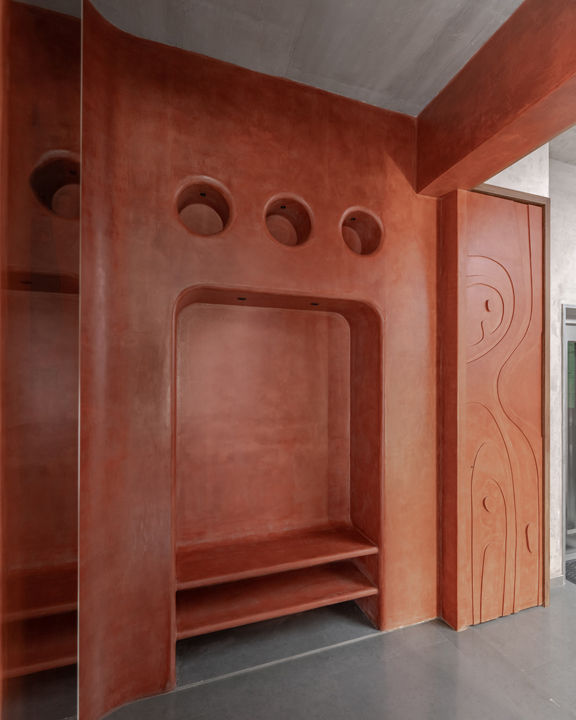
Each desk is a unique testament to our conversation with discerning clients. With a keen understanding of their operational needs, we crafted every piece in-house, a play between vision and execution. Further, this flank holds the second executive cabin and the temple. The temple is the only part of the project that has a material change. The decision was taken to mark this with a marble and more elaborate handles to amplify its significance. The tables in the executive cabins are designed in layers of gray micro concrete, punctured strategically with hints of wood seeping in. A custom-made artwork by Rutva Joshi embraces the back walls of the two executive cabins.

In Design Ni Dukaan, the art of design thinking is a collective adventure, with every member, from the visionary founder to the aspiring interns, contributing their creative essence. Pattern-making is a skill that the studio focuses on, especially with interns. Taking inspiration from Ar. Burle Marx’s work, the team derived endless patterns. These patterns were translated and printed on fabric and used in the major large solid partitions of the project with a sandwiched glass detail.
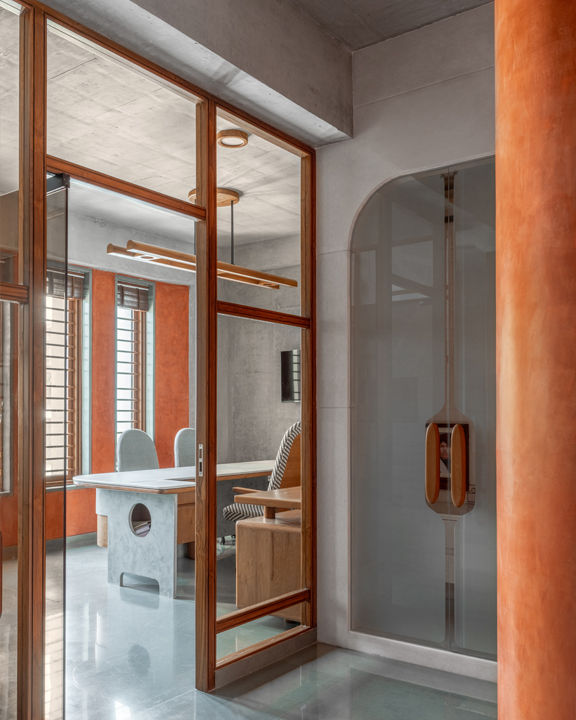
“It is always fulfilling when the client gives the designer a free hand till the functions are realized. It is then that the client becomes your collaborator. The only thing that was insisted on was the client’s buyout were the chairs. Eventually, we ended up designing these too. Every element in this project from the lights, the loose furniture, the office chairs, handle details, the murals, art and even the logo of the company was designed by Design Ni Dukaan. The sense of artistic fulfillment that permeates this endeavor is simply sublime.” says Veeram Shah.
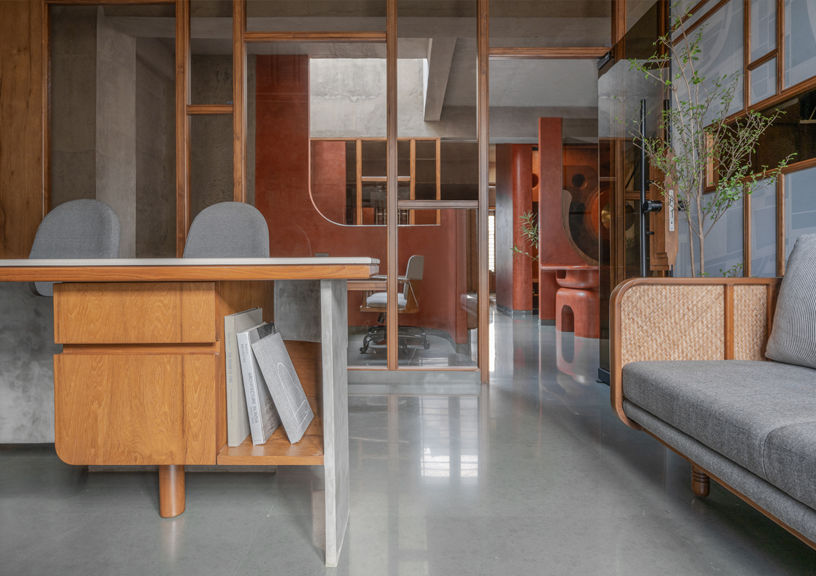
Through this holistic approach, Design ni Dukaan envisions a future where workspaces are more than utilitarian structures; they are living, breathing entities that inspire, nurture, and elevate the human experience. Each project becomes a canvas upon which this vision unfurls, weaving together the threads of materiality, culture, and artistry to create spaces that transcend the ordinary and embrace the extraordinary.

FACT FILE:
Location: Gandhidham, Gujarat
Area: 1328 sq ft
Architect: Ar. Veeram Shah
Studio: Design Ni Dukaan
Carpentry: Mr. Paras Suthar and team
Electrical: Mr. Vithal and team
Textile design: Design Ni Dukaan
Furniture: Design Ni Dukaan
Photography: Kuber Shah
Artwork: Rutva Joshi
Micro concrete work: Heubeton, Ahmedabad
